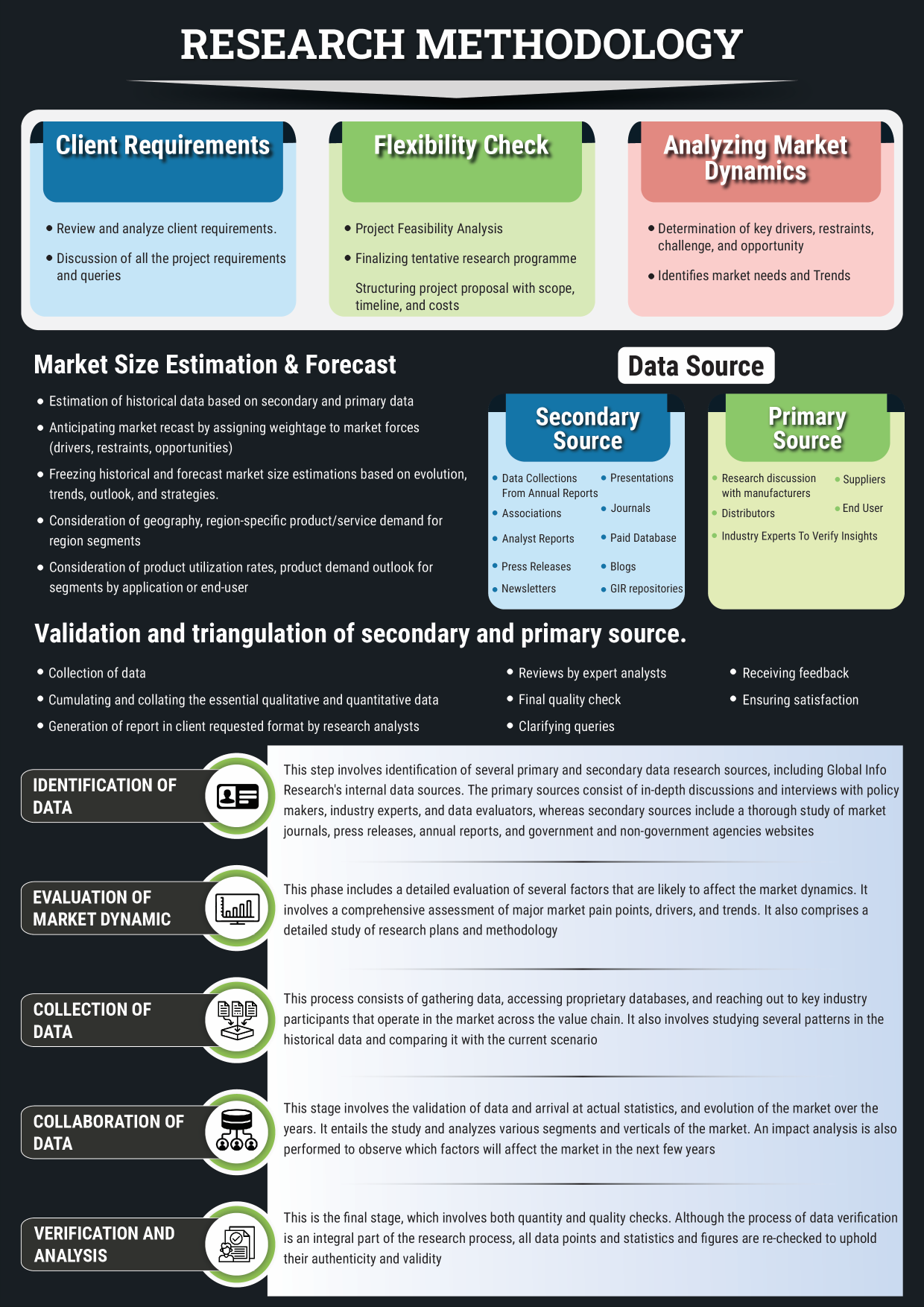Introduction
The Melatonin Receptor Agonists Market 2025 is expected to experience rapid growth as consumer interest in non-habit-forming, natural sleep aids continues to surge. These compounds, which simulate the action of melatonin— the hormone regulating the sleep-wake cycle—are gaining traction as alternatives to traditional sedatives. With growing concerns about the adverse effects of conventional sleep medications, melatonin receptor agonists are positioning themselves as a safer, more effective option for treating sleep disorders such as insomnia and circadian rhythm disturbances. This comprehensive market overview delves into the factors driving growth, innovations shaping the market, regional dynamics, and strategic insights for stakeholders navigating this lucrative sector.
Market Drivers and Growth Catalysts
- Rising Global Burden of Sleep Disorders
Globally, sleep disorders such as insomnia, sleep apnea, and circadian rhythm disruptions are becoming increasingly prevalent, affecting millions of individuals. Lifestyle factors—such as high-stress environments, excessive screen time, and irregular working hours—are contributing to the rise in sleep-related problems. As awareness of sleep health grows, patients and healthcare professionals are turning to melatonin receptor agonists for their proven efficacy in improving sleep quality without the risk of addiction or harmful side effects associated with traditional sedative-hypnotics. - Demand for Non-Sedative Sleep Aids
Melatonin receptor agonists are increasingly viewed as a safer, non-habit-forming alternative to benzodiazepines and other sleep medications. With the growing focus on natural health solutions, patients are becoming more cautious about the potential long-term risks of sedative use. As a result, melatonin receptor agonists are positioning themselves as effective and safer options for managing chronic sleep disturbances, especially for those in need of long-term solutions. - Aging Global Population
As the world’s population continues to age, the prevalence of sleep disorders among elderly individuals is on the rise. Age-related changes in sleep patterns and the increased incidence of conditions like dementia, anxiety, and depression make the elderly population a key demographic for melatonin receptor agonists. With growing healthcare needs among this segment, pharmaceutical companies are focusing on developing formulations that cater specifically to older adults, making this market segment a significant driver of demand. - Increased Focus on Mental Health
The recognition of the link between mental health and sleep quality is driving greater acceptance of therapies like melatonin receptor agonists. Many individuals suffering from anxiety, depression, or stress-related conditions are also affected by sleep disturbances. Melatonin receptor agonists offer dual benefits in managing both mood disorders and sleep issues, aligning with the growing trend of integrated healthcare solutions.
Innovations Fueling Market Expansion
- Advanced Drug Delivery Systems
The development of innovative drug delivery systems is enhancing the effectiveness of melatonin receptor agonists. Extended-release formulations, which provide sustained therapeutic effects throughout the night, are gaining popularity. These formulations help avoid the sedative effects experienced with traditional sleep medications and provide uninterrupted sleep, particularly for individuals with chronic insomnia. - Combination Therapies
Pharmaceutical companies are increasingly exploring the combination of melatonin receptor agonists with other therapeutic agents, such as selective serotonin reuptake inhibitors (SSRIs) or benzodiazepine receptor agonists. These combination therapies aim to address multiple aspects of sleep disorders, including anxiety and depression, providing a comprehensive treatment for patients with complex symptoms. - Personalized Medicine
As precision medicine continues to evolve, melatonin receptor agonists are entering an era of personalized therapy. Advances in genetic testing and sleep monitoring devices are enabling healthcare providers to tailor melatonin receptor agonist treatments to individual patients based on their unique sleep patterns, genetics, and medical histories. This approach not only enhances treatment outcomes but also reduces side effects, making therapies more effective and well-tolerated by patients. - Over the Counter (OTC) Availability
The increasing availability of melatonin receptor agonists in OTC formulations is expanding access to consumers. As individuals become more proactive about their health, many are seeking non-prescription options to help manage their sleep problems. This trend is fueling demand for melatonin receptor agonists in retail pharmacies and online marketplaces, opening new revenue streams for pharmaceutical companies.
Regional Market Dynamics
- North America
North America holds the largest share of the melatonin receptor agonists market, driven by a well-established healthcare infrastructure, widespread access to sleep therapies, and a growing preference for non-addictive sleep aids. The U.S. market, in particular, is poised for growth due to high rates of sleep disorders, an aging population, and the robust presence of leading pharmaceutical companies. Additionally, the shift toward OTC sleep aids is boosting market expansion, as consumers increasingly seek over-the-counter solutions for sleep issues. - Europe
Europe presents a steady growth trajectory, supported by a growing awareness of sleep disorders and a strong preference for natural sleep solutions. The region's aging population, in combination with increasing healthcare investments, positions Europe as a lucrative market for melatonin receptor agonists. Additionally, European consumers are highly receptive to alternative medicine, which has contributed to the rise in demand for these therapeutic agents. - Asia-Pacific
The Asia-Pacific region is experiencing the highest growth potential in the melatonin receptor agonists market. Rapid urbanization, an increase in stress-related sleep issues, and rising healthcare access are key factors driving this growth. Countries such as Japan, South Korea, China, and India are seeing increased demand for melatonin receptor agonists as consumers become more health-conscious. Moreover, significant investments in healthcare infrastructure and research and development activities are positioning the region as a major player in the global market.
Strategic Insights for Market Players
For businesses looking to succeed in the melatonin receptor agonists market, several strategic considerations are crucial:
- Regulatory Landscape: Understanding the regulatory requirements across different regions (e.g., FDA in the U.S., EMA in Europe) is essential for market entry and product approval.
- Innovation and Differentiation: Emphasizing product innovation, such as extended-release formulations and combination therapies, will set companies apart in a competitive landscape.
- Consumer Trends: Monitoring shifts in consumer behavior, such as the increasing preference for OTC and natural sleep solutions, will help companies align product offerings with evolving market demands.
- Digital and Online Sales Channels: As consumers increasingly turn to online platforms for purchasing health products, building a strong e-commerce presence is vital for capturing market share.
Conclusion: Outlook for 2025 and Beyond
The Melatonin Receptor Agonists Market 2025 offers substantial growth opportunities driven by evolving consumer preferences, increasing awareness of sleep health, and the demand for safer, non-addictive therapies. As innovation in formulations, personalized medicine, and digital health continues to shape the landscape, stakeholders must remain adaptable to market trends. By focusing on advanced research, strategic regional expansion, and consumer-centric product development, businesses can establish a strong foothold in this burgeoning market.
NOTE:
Quants and Trends is proud to offer an extensive portfolio of meticulously researched healthcare market reports, numbering in the thousands. We also provide tailored customization services to ensure our insights align precisely with your strategic objectives and informational needs. For personalized assistance or to discuss your specific requirements, we invite you to get in touch with our team. We also encourage you to request a complimentary sample PDF report. Please visit our Sample Request Page to receive yours today.
Key Market Players
Takeda Pharmaceutical
Vanda Pharmaceuticals
Pfizer
Natrol
Pharmavite
Nature's Bounty
Jameison
Rexall Sundown
GNC
Xiu Zheng
Church & Dwight
BY-HEALTH
Solgar
Biotics Research
Now Food
Segmentation By Type
Ramelteon
Tasimelteon
Agomelatine
Other
Segmentation By Application
Hospital
Clinic
Other
Segmentation By Region
North America (United States, Canada and Mexico)
Europe (Germany, France, United Kingdom, Russia, Italy, and Rest of Europe)
Asia-Pacific (China, Japan, Korea, India, Southeast Asia, and Australia)
South America (Brazil, Argentina, Colombia, and Rest of South America)
Middle East & Africa (Saudi Arabia, UAE, Egypt, South Africa, and Rest of Middle East & Africa)
Market SWOT Analysis
What are the strengths of the Melatonin Receptor Agonists Market in 2025?
The growing awareness of sleep disorders and the increasing demand for non-habit-forming sleep aids enhance the market potential. Melatonin receptor agonists are expected to gain popularity due to their efficacy in managing insomnia, jet lag, and other sleep-related issues without the side effects commonly associated with traditional sleep medications.
What are the weaknesses in the Melatonin Receptor Agonists Market?
A key weakness lies in the limited long-term safety data, as melatonin receptor agonists are relatively new in clinical use. This could lead to hesitance among healthcare providers and patients. Additionally, variations in individual responses and the lack of standardization in melatonin-based treatments may create challenges in consistent market growth.
What are the opportunities for the Melatonin Receptor Agonists Market in 2025?
Opportunities exist in expanding research to explore additional therapeutic uses, such as treating mood disorders, anxiety, and neurodegenerative diseases. Furthermore, the rising preference for natural and plant-based treatments presents an opportunity to market melatonin receptor agonists as a more natural alternative to traditional pharmaceuticals.
What are the threats to the Melatonin Receptor Agonists Market in 2025?
Competition from other sleep aid solutions, including both pharmaceutical and over-the-counter options, poses a significant threat. Additionally, regulatory challenges and the potential for market saturation as more companies enter the space could limit the growth potential of melatonin receptor agonists.
Market PESTEL Analysis
What are the political factors influencing the Melatonin Receptor Agonists Market in 2025?
Regulations regarding the approval and marketing of new drugs, including melatonin receptor agonists, are influenced by government policies. Government support for health and wellness initiatives can create a favorable environment for melatonin-based treatments. However, stricter regulations on drug safety and efficacy may slow down market entry and adoption.
What are the economic factors affecting the Melatonin Receptor Agonists Market?
The growing demand for affordable sleep aids in both developed and emerging markets could drive economic growth for melatonin receptor agonists. However, economic downturns or shifts in healthcare spending may limit access to these treatments. Moreover, the cost of developing and launching these drugs can also affect the overall market pricing and profitability.
What are the social factors impacting the Melatonin Receptor Agonists Market?
Increasing awareness about sleep disorders, a growing focus on mental health, and a shift toward natural remedies drive the demand for melatonin receptor agonists. However, there are social stigmas around sleep medications, which could hinder market growth if the perception of safety and effectiveness isn't adequately addressed.
What are the technological factors influencing the Melatonin Receptor Agonists Market?
Advancements in drug formulation and delivery methods can lead to more effective and convenient melatonin receptor agonists. Additionally, technological innovations in genetic research may help in personalizing treatments based on individual genetic profiles, expanding the potential market.
What are the environmental factors affecting the Melatonin Receptor Agonists Market?
Environmental sustainability in drug production is an emerging concern, with the market seeing increasing demand for eco-friendly practices. Manufacturers may face pressure to source raw materials responsibly and reduce their carbon footprint in the production of melatonin receptor agonists.
What are the legal factors impacting the Melatonin Receptor Agonists Market?
Legal issues surrounding intellectual property rights, patent protection, and drug approval processes can impact market dynamics. Companies must navigate stringent legal frameworks to ensure their products are compliant with international standards. Additionally, potential lawsuits related to side effects or adverse reactions could affect brand reputation and market share.
Market SIPOC Analysis
What are the suppliers involved in the Melatonin Receptor Agonists Market in 2025?
Suppliers include pharmaceutical companies, research and development labs, raw material suppliers (such as melatonin derivatives), and contract manufacturing organizations. These entities provide the necessary ingredients, formulations, and technology required to produce melatonin receptor agonists at scale.
What are the inputs needed for the Melatonin Receptor Agonists Market?
The primary inputs are active pharmaceutical ingredients (APIs) like melatonin analogs, research data, clinical trial results, regulatory approvals, and manufacturing facilities. Additionally, technology for drug delivery and packaging is crucial to ensure the product's effectiveness and safety.
What are the processes involved in the Melatonin Receptor Agonists Market?
The processes include drug development, clinical testing, regulatory approval, mass production, and distribution. After development and successful clinical trials, the product undergoes quality assurance checks and meets legal and regulatory standards before being marketed globally.
What are the outputs produced by the Melatonin Receptor Agonists Market?
The outputs are finished melatonin receptor agonist medications, both in prescription and over-the-counter forms. These medications help treat sleep disorders like insomnia, jet lag, and other related conditions. The final products are distributed to pharmacies, hospitals, and directly to consumers.
Who are the customers of the Melatonin Receptor Agonists Market?
Customers include healthcare providers, pharmaceutical distributors, pharmacies, and end consumers suffering from sleep-related issues. Additionally, healthcare systems and insurance companies that offer these medications as part of their coverage plans also represent a key customer segment.
Market Porter's Five Forces
What is the threat of new entrants in the Melatonin Receptor Agonists Market in 2025?
The threat of new entrants is moderate. While the market has growth potential, it requires substantial investment in research and development, regulatory approvals, and manufacturing capabilities. The complexities of these barriers make it challenging for new companies to quickly enter the market and compete with established players.
What is the bargaining power of suppliers in the Melatonin Receptor Agonists Market?
The bargaining power of suppliers is moderate to high. Key suppliers, such as those providing raw materials for melatonin analogs, hold some leverage as they control the quality and availability of essential ingredients. However, the competition among suppliers mitigates this power to some extent.
What is the bargaining power of buyers in the Melatonin Receptor Agonists Market?
The bargaining power of buyers is moderate. As consumers and healthcare providers become more informed about sleep medications, they can choose from a variety of products, including over-the-counter options. However, melatonin receptor agonists offer a specialized solution, which reduces the level of bargaining power compared to more generic alternatives.
What is the threat of substitute products in the Melatonin Receptor Agonists Market?
The threat of substitutes is high. There are many alternative sleep aids available, such as over-the-counter melatonin supplements, prescription sleep medications, and lifestyle changes (like cognitive-behavioral therapy for insomnia). These substitutes provide various options to consumers, posing a challenge to the dominance of melatonin receptor agonists.
What is the intensity of competitive rivalry in the Melatonin Receptor Agonists Market?
The intensity of competitive rivalry is moderate. While there are a few key players in the market, competition is increasing as more companies focus on developing melatonin receptor agonists and other sleep-related therapies. Innovation in formulations and delivery methods will be crucial for companies to maintain their competitive edge in this growing market.
Market Upstream Analysis
What are the key raw materials required in the Melatonin Receptor Agonists Market?
The key raw materials include melatonin analogs, which serve as the active pharmaceutical ingredient, along with excipients, stabilizers, and other compounds necessary for drug formulation. Additionally, specialized packaging materials and technology for precise drug delivery mechanisms are essential.
What are the main suppliers in the upstream value chain of the Melatonin Receptor Agonists Market?
The main suppliers are pharmaceutical manufacturers, chemical suppliers, and biotechnology companies that produce the active ingredients, as well as contract research organizations (CROs) that support clinical trials. Regulatory bodies also play a crucial role in approving the production processes and ensuring quality control.
What are the technological requirements in the upstream process of producing Melatonin Receptor Agonists?
The upstream process requires advanced technologies in drug synthesis, formulation, and delivery systems. Innovations in controlled release formulations, high-quality manufacturing equipment, and robust analytical testing methods are critical to ensuring product quality and consistency.
What regulatory challenges exist in the upstream process of the Melatonin Receptor Agonists Market?
Regulatory challenges include compliance with stringent standards set by agencies like the FDA and EMA. These include approval processes for new drug formulations, adherence to good manufacturing practices (GMP), and meeting safety and efficacy requirements through clinical trials. Regulatory delays or non-compliance could disrupt the supply chain.
How does the upstream process impact the cost structure in the Melatonin Receptor Agonists Market?
The upstream process impacts the cost structure significantly, as sourcing raw materials, conducting research and development, and ensuring regulatory compliance involve high costs. Additionally, investments in production facilities and the costs associated with quality control and safety testing contribute to the overall cost of production, affecting pricing strategies in the market.
Market Midstream Analysis
What are the key processes in the midstream value chain of the Melatonin Receptor Agonists Market?
The key processes in the midstream value chain include drug formulation, clinical trials, manufacturing, packaging, and quality control. This stage is crucial for ensuring the drug meets regulatory standards and is produced efficiently at scale.
What are the major players involved in the midstream process of Melatonin Receptor Agonists?
The major players in the midstream process include pharmaceutical companies responsible for drug development, contract manufacturing organizations (CMOs) that handle large-scale production, and regulatory bodies that oversee compliance. Additionally, quality assurance and packaging companies are key stakeholders in this stage.
What are the technological requirements in the midstream process of producing Melatonin Receptor Agonists?
Advanced manufacturing technologies such as high-throughput production lines, precision dosing systems, and automated quality control processes are essential. The integration of digital technologies for tracking production and ensuring batch consistency is also becoming increasingly important.
How does the midstream process impact the overall supply chain of Melatonin Receptor Agonists?
The midstream process directly affects the supply chain by ensuring the timely production and distribution of melatonin receptor agonists. Any disruptions in manufacturing, quality control, or regulatory approval can delay product availability, leading to potential market shortages or delayed product launches.
What are the challenges faced in the midstream process of the Melatonin Receptor Agonists Market?
Challenges include managing production capacity to meet market demand, adhering to strict regulatory guidelines, ensuring consistency in drug quality, and navigating potential delays in clinical trials or regulatory approval. Additionally, fluctuations in raw material costs can affect the cost-efficiency of the midstream process.
Market Downstream Analysis
What are the key activities in the downstream value chain of the Melatonin Receptor Agonists Market?
The key activities in the downstream value chain include distribution to pharmacies, hospitals, and clinics, marketing to healthcare providers and consumers, post-market surveillance, and customer support. These activities are essential for product accessibility and ensuring patient safety after the drug is launched.
Who are the key players involved in the downstream process of Melatonin Receptor Agonists?
Key players in the downstream process include pharmaceutical distributors, retail pharmacies, hospitals, and healthcare providers who prescribe or recommend the medication. Additionally, marketing agencies and customer support services play a vital role in promoting the product to end users and providing ongoing education.
How do marketing strategies affect the downstream process of Melatonin Receptor Agonists?
Effective marketing strategies are crucial in educating consumers and healthcare professionals about the benefits and safety of melatonin receptor agonists. Advertising campaigns, educational programs, and doctor-patient engagement influence the adoption and usage of these medications, directly impacting their market success.
What role does regulation play in the downstream process of Melatonin Receptor Agonists?
Regulatory bodies continue to monitor the safety and efficacy of melatonin receptor agonists after they enter the market. They ensure that post-market surveillance is conducted and that any adverse effects or issues are addressed. Compliance with regulatory standards is crucial to maintaining product availability and consumer trust.
What challenges exist in the downstream process of the Melatonin Receptor Agonists Market?
Challenges in the downstream process include ensuring the consistent supply of the product, managing distribution networks, navigating complex healthcare systems, and addressing any negative perceptions of sleep medications. Additionally, the market may face competition from alternative treatments, impacting product sales and market share.
Chapter 1, to describe Melatonin Receptor Agonists product scope, market overview, market estimation caveats and base year.
Chapter 2, to profile the top manufacturers of Melatonin Receptor Agonists, with price, sales, revenue and global market share of Melatonin Receptor Agonists from 2018 to 2023.
Chapter 3, the Melatonin Receptor Agonists competitive situation, sales quantity, revenue and global market share of top manufacturers are analyzed emphatically by landscape contrast.
Chapter 4, the Melatonin Receptor Agonists breakdown data are shown at the regional level, to show the sales quantity, consumption value and growth by regions, from 2018 to 2029.
Chapter 5 and 6, to segment the sales by Type and application, with sales market share and growth rate by type, application, from 2018 to 2029.
Chapter 7, 8, 9, 10 and 11, to break the sales data at the country level, with sales quantity, consumption value and market share for key countries in the world, from 2017 to 2022.and Melatonin Receptor Agonists market forecast, by regions, type and application, with sales and revenue, from 2024 to 2029.
Chapter 12, market dynamics, drivers, restraints, trends, Porters Five Forces analysis, and Influence of COVID-19 and Russia-Ukraine War.
Chapter 13, the key raw materials and key suppliers, and industry chain of Melatonin Receptor Agonists.
Chapter 14 and 15, to describe Melatonin Receptor Agonists sales channel, distributors, customers, research findings and conclusion.
1 Market Overview
1.1 Product Overview and Scope of Melatonin Receptor Agonists
1.2 Market Estimation Caveats and Base Year
1.3 Market Analysis by Type
1.3.1 Overview: Global Melatonin Receptor Agonists Consumption Value by Type: 2018 Versus 2022 Versus 2029
1.3.2 Ramelteon
1.3.3 Tasimelteon
1.3.4 Agomelatine
1.3.5 Other
1.4 Market Analysis by Application
1.4.1 Overview: Global Melatonin Receptor Agonists Consumption Value by Application: 2018 Versus 2022 Versus 2029
1.4.2 Hospital
1.4.3 Clinic
1.4.4 Other
1.5 Global Melatonin Receptor Agonists Market Size & Forecast
1.5.1 Global Melatonin Receptor Agonists Consumption Value (2018 & 2022 & 2029)
1.5.2 Global Melatonin Receptor Agonists Sales Quantity (2018-2029)
1.5.3 Global Melatonin Receptor Agonists Average Price (2018-2029)
2 Manufacturers Profiles
2.1 Takeda Pharmaceutical
2.1.1 Takeda Pharmaceutical Details
2.1.2 Takeda Pharmaceutical Major Business
2.1.3 Takeda Pharmaceutical Melatonin Receptor Agonists Product and Services
2.1.4 Takeda Pharmaceutical Melatonin Receptor Agonists Sales Quantity, Average Price, Revenue, Gross Margin and Market Share (2018-2023)
2.1.5 Takeda Pharmaceutical Recent Developments/Updates
2.2 Vanda Pharmaceuticals
2.2.1 Vanda Pharmaceuticals Details
2.2.2 Vanda Pharmaceuticals Major Business
2.2.3 Vanda Pharmaceuticals Melatonin Receptor Agonists Product and Services
2.2.4 Vanda Pharmaceuticals Melatonin Receptor Agonists Sales Quantity, Average Price, Revenue, Gross Margin and Market Share (2018-2023)
2.2.5 Vanda Pharmaceuticals Recent Developments/Updates
2.3 Pfizer
2.3.1 Pfizer Details
2.3.2 Pfizer Major Business
2.3.3 Pfizer Melatonin Receptor Agonists Product and Services
2.3.4 Pfizer Melatonin Receptor Agonists Sales Quantity, Average Price, Revenue, Gross Margin and Market Share (2018-2023)
2.3.5 Pfizer Recent Developments/Updates
2.4 Natrol
2.4.1 Natrol Details
2.4.2 Natrol Major Business
2.4.3 Natrol Melatonin Receptor Agonists Product and Services
2.4.4 Natrol Melatonin Receptor Agonists Sales Quantity, Average Price, Revenue, Gross Margin and Market Share (2018-2023)
2.4.5 Natrol Recent Developments/Updates
2.5 Pharmavite
2.5.1 Pharmavite Details
2.5.2 Pharmavite Major Business
2.5.3 Pharmavite Melatonin Receptor Agonists Product and Services
2.5.4 Pharmavite Melatonin Receptor Agonists Sales Quantity, Average Price, Revenue, Gross Margin and Market Share (2018-2023)
2.5.5 Pharmavite Recent Developments/Updates
2.6 Nature's Bounty
2.6.1 Nature's Bounty Details
2.6.2 Nature's Bounty Major Business
2.6.3 Nature's Bounty Melatonin Receptor Agonists Product and Services
2.6.4 Nature's Bounty Melatonin Receptor Agonists Sales Quantity, Average Price, Revenue, Gross Margin and Market Share (2018-2023)
2.6.5 Nature's Bounty Recent Developments/Updates
2.7 Jameison
2.7.1 Jameison Details
2.7.2 Jameison Major Business
2.7.3 Jameison Melatonin Receptor Agonists Product and Services
2.7.4 Jameison Melatonin Receptor Agonists Sales Quantity, Average Price, Revenue, Gross Margin and Market Share (2018-2023)
2.7.5 Jameison Recent Developments/Updates
2.8 Rexall Sundown
2.8.1 Rexall Sundown Details
2.8.2 Rexall Sundown Major Business
2.8.3 Rexall Sundown Melatonin Receptor Agonists Product and Services
2.8.4 Rexall Sundown Melatonin Receptor Agonists Sales Quantity, Average Price, Revenue, Gross Margin and Market Share (2018-2023)
2.8.5 Rexall Sundown Recent Developments/Updates
2.9 GNC
2.9.1 GNC Details
2.9.2 GNC Major Business
2.9.3 GNC Melatonin Receptor Agonists Product and Services
2.9.4 GNC Melatonin Receptor Agonists Sales Quantity, Average Price, Revenue, Gross Margin and Market Share (2018-2023)
2.9.5 GNC Recent Developments/Updates
2.10 Xiu Zheng
2.10.1 Xiu Zheng Details
2.10.2 Xiu Zheng Major Business
2.10.3 Xiu Zheng Melatonin Receptor Agonists Product and Services
2.10.4 Xiu Zheng Melatonin Receptor Agonists Sales Quantity, Average Price, Revenue, Gross Margin and Market Share (2018-2023)
2.10.5 Xiu Zheng Recent Developments/Updates
2.11 Church & Dwight
2.11.1 Church & Dwight Details
2.11.2 Church & Dwight Major Business
2.11.3 Church & Dwight Melatonin Receptor Agonists Product and Services
2.11.4 Church & Dwight Melatonin Receptor Agonists Sales Quantity, Average Price, Revenue, Gross Margin and Market Share (2018-2023)
2.11.5 Church & Dwight Recent Developments/Updates
2.12 BY-HEALTH
2.12.1 BY-HEALTH Details
2.12.2 BY-HEALTH Major Business
2.12.3 BY-HEALTH Melatonin Receptor Agonists Product and Services
2.12.4 BY-HEALTH Melatonin Receptor Agonists Sales Quantity, Average Price, Revenue, Gross Margin and Market Share (2018-2023)
2.12.5 BY-HEALTH Recent Developments/Updates
2.13 Solgar
2.13.1 Solgar Details
2.13.2 Solgar Major Business
2.13.3 Solgar Melatonin Receptor Agonists Product and Services
2.13.4 Solgar Melatonin Receptor Agonists Sales Quantity, Average Price, Revenue, Gross Margin and Market Share (2018-2023)
2.13.5 Solgar Recent Developments/Updates
2.14 Biotics Research
2.14.1 Biotics Research Details
2.14.2 Biotics Research Major Business
2.14.3 Biotics Research Melatonin Receptor Agonists Product and Services
2.14.4 Biotics Research Melatonin Receptor Agonists Sales Quantity, Average Price, Revenue, Gross Margin and Market Share (2018-2023)
2.14.5 Biotics Research Recent Developments/Updates
2.15 Now Food
2.15.1 Now Food Details
2.15.2 Now Food Major Business
2.15.3 Now Food Melatonin Receptor Agonists Product and Services
2.15.4 Now Food Melatonin Receptor Agonists Sales Quantity, Average Price, Revenue, Gross Margin and Market Share (2018-2023)
2.15.5 Now Food Recent Developments/Updates
3 Competitive Environment: Melatonin Receptor Agonists by Manufacturer
3.1 Global Melatonin Receptor Agonists Sales Quantity by Manufacturer (2018-2023)
3.2 Global Melatonin Receptor Agonists Revenue by Manufacturer (2018-2023)
3.3 Global Melatonin Receptor Agonists Average Price by Manufacturer (2018-2023)
3.4 Market Share Analysis (2022)
3.4.1 Producer Shipments of Melatonin Receptor Agonists by Manufacturer Revenue ($MM) and Market Share (%): 2022
3.4.2 Top 3 Melatonin Receptor Agonists Manufacturer Market Share in 2022
3.4.2 Top 6 Melatonin Receptor Agonists Manufacturer Market Share in 2022
3.5 Melatonin Receptor Agonists Market: Overall Company Footprint Analysis
3.5.1 Melatonin Receptor Agonists Market: Region Footprint
3.5.2 Melatonin Receptor Agonists Market: Company Product Type Footprint
3.5.3 Melatonin Receptor Agonists Market: Company Product Application Footprint
3.6 New Market Entrants and Barriers to Market Entry
3.7 Mergers, Acquisition, Agreements, and Collaborations
4 Consumption Analysis by Region
4.1 Global Melatonin Receptor Agonists Market Size by Region
4.1.1 Global Melatonin Receptor Agonists Sales Quantity by Region (2018-2029)
4.1.2 Global Melatonin Receptor Agonists Consumption Value by Region (2018-2029)
4.1.3 Global Melatonin Receptor Agonists Average Price by Region (2018-2029)
4.2 North America Melatonin Receptor Agonists Consumption Value (2018-2029)
4.3 Europe Melatonin Receptor Agonists Consumption Value (2018-2029)
4.4 Asia-Pacific Melatonin Receptor Agonists Consumption Value (2018-2029)
4.5 South America Melatonin Receptor Agonists Consumption Value (2018-2029)
4.6 Middle East and Africa Melatonin Receptor Agonists Consumption Value (2018-2029)
5 Market Segment by Type
5.1 Global Melatonin Receptor Agonists Sales Quantity by Type (2018-2029)
5.2 Global Melatonin Receptor Agonists Consumption Value by Type (2018-2029)
5.3 Global Melatonin Receptor Agonists Average Price by Type (2018-2029)
6 Market Segment by Application
6.1 Global Melatonin Receptor Agonists Sales Quantity by Application (2018-2029)
6.2 Global Melatonin Receptor Agonists Consumption Value by Application (2018-2029)
6.3 Global Melatonin Receptor Agonists Average Price by Application (2018-2029)
7 North America
7.1 North America Melatonin Receptor Agonists Sales Quantity by Type (2018-2029)
7.2 North America Melatonin Receptor Agonists Sales Quantity by Application (2018-2029)
7.3 North America Melatonin Receptor Agonists Market Size by Country
7.3.1 North America Melatonin Receptor Agonists Sales Quantity by Country (2018-2029)
7.3.2 North America Melatonin Receptor Agonists Consumption Value by Country (2018-2029)
7.3.3 United States Market Size and Forecast (2018-2029)
7.3.4 Canada Market Size and Forecast (2018-2029)
7.3.5 Mexico Market Size and Forecast (2018-2029)
8 Europe
8.1 Europe Melatonin Receptor Agonists Sales Quantity by Type (2018-2029)
8.2 Europe Melatonin Receptor Agonists Sales Quantity by Application (2018-2029)
8.3 Europe Melatonin Receptor Agonists Market Size by Country
8.3.1 Europe Melatonin Receptor Agonists Sales Quantity by Country (2018-2029)
8.3.2 Europe Melatonin Receptor Agonists Consumption Value by Country (2018-2029)
8.3.3 Germany Market Size and Forecast (2018-2029)
8.3.4 France Market Size and Forecast (2018-2029)
8.3.5 United Kingdom Market Size and Forecast (2018-2029)
8.3.6 Russia Market Size and Forecast (2018-2029)
8.3.7 Italy Market Size and Forecast (2018-2029)
9 Asia-Pacific
9.1 Asia-Pacific Melatonin Receptor Agonists Sales Quantity by Type (2018-2029)
9.2 Asia-Pacific Melatonin Receptor Agonists Sales Quantity by Application (2018-2029)
9.3 Asia-Pacific Melatonin Receptor Agonists Market Size by Region
9.3.1 Asia-Pacific Melatonin Receptor Agonists Sales Quantity by Region (2018-2029)
9.3.2 Asia-Pacific Melatonin Receptor Agonists Consumption Value by Region (2018-2029)
9.3.3 China Market Size and Forecast (2018-2029)
9.3.4 Japan Market Size and Forecast (2018-2029)
9.3.5 Korea Market Size and Forecast (2018-2029)
9.3.6 India Market Size and Forecast (2018-2029)
9.3.7 Southeast Asia Market Size and Forecast (2018-2029)
9.3.8 Australia Market Size and Forecast (2018-2029)
10 South America
10.1 South America Melatonin Receptor Agonists Sales Quantity by Type (2018-2029)
10.2 South America Melatonin Receptor Agonists Sales Quantity by Application (2018-2029)
10.3 South America Melatonin Receptor Agonists Market Size by Country
10.3.1 South America Melatonin Receptor Agonists Sales Quantity by Country (2018-2029)
10.3.2 South America Melatonin Receptor Agonists Consumption Value by Country (2018-2029)
10.3.3 Brazil Market Size and Forecast (2018-2029)
10.3.4 Argentina Market Size and Forecast (2018-2029)
11 Middle East & Africa
11.1 Middle East & Africa Melatonin Receptor Agonists Sales Quantity by Type (2018-2029)
11.2 Middle East & Africa Melatonin Receptor Agonists Sales Quantity by Application (2018-2029)
11.3 Middle East & Africa Melatonin Receptor Agonists Market Size by Country
11.3.1 Middle East & Africa Melatonin Receptor Agonists Sales Quantity by Country (2018-2029)
11.3.2 Middle East & Africa Melatonin Receptor Agonists Consumption Value by Country (2018-2029)
11.3.3 Turkey Market Size and Forecast (2018-2029)
11.3.4 Egypt Market Size and Forecast (2018-2029)
11.3.5 Saudi Arabia Market Size and Forecast (2018-2029)
11.3.6 South Africa Market Size and Forecast (2018-2029)
12 Market Dynamics
12.1 Melatonin Receptor Agonists Market Drivers
12.2 Melatonin Receptor Agonists Market Restraints
12.3 Melatonin Receptor Agonists Trends Analysis
12.4 Porters Five Forces Analysis
12.4.1 Threat of New Entrants
12.4.2 Bargaining Power of Suppliers
12.4.3 Bargaining Power of Buyers
12.4.4 Threat of Substitutes
12.4.5 Competitive Rivalry
12.5 Influence of COVID-19 and Russia-Ukraine War
12.5.1 Influence of COVID-19
12.5.2 Influence of Russia-Ukraine War
13 Raw Material and Industry Chain
13.1 Raw Material of Melatonin Receptor Agonists and Key Manufacturers
13.2 Manufacturing Costs Percentage of Melatonin Receptor Agonists
13.3 Melatonin Receptor Agonists Production Process
13.4 Melatonin Receptor Agonists Industrial Chain
14 Shipments by Distribution Channel
14.1 Sales Channel
14.1.1 Direct to End-User
14.1.2 Distributors
14.2 Melatonin Receptor Agonists Typical Distributors
14.3 Melatonin Receptor Agonists Typical Customers
15 Research Findings and Conclusion
16 Appendix
16.1 Methodology
16.2 Research Process and Data Source
16.3 Disclaimer
List of Tables
Table 1. Global Melatonin Receptor Agonists Consumption Value by Type, (USD Million), 2018 & 2022 & 2029
Table 2. Global Melatonin Receptor Agonists Consumption Value by Application, (USD Million), 2018 & 2022 & 2029
Table 3. Takeda Pharmaceutical Basic Information, Manufacturing Base and Competitors
Table 4. Takeda Pharmaceutical Major Business
Table 5. Takeda Pharmaceutical Melatonin Receptor Agonists Product and Services
Table 6. Takeda Pharmaceutical Melatonin Receptor Agonists Sales Quantity (K Units), Average Price (US$/Unit), Revenue (USD Million), Gross Margin and Market Share (2018-2023)
Table 7. Takeda Pharmaceutical Recent Developments/Updates
Table 8. Vanda Pharmaceuticals Basic Information, Manufacturing Base and Competitors
Table 9. Vanda Pharmaceuticals Major Business
Table 10. Vanda Pharmaceuticals Melatonin Receptor Agonists Product and Services
Table 11. Vanda Pharmaceuticals Melatonin Receptor Agonists Sales Quantity (K Units), Average Price (US$/Unit), Revenue (USD Million), Gross Margin and Market Share (2018-2023)
Table 12. Vanda Pharmaceuticals Recent Developments/Updates
Table 13. Pfizer Basic Information, Manufacturing Base and Competitors
Table 14. Pfizer Major Business
Table 15. Pfizer Melatonin Receptor Agonists Product and Services
Table 16. Pfizer Melatonin Receptor Agonists Sales Quantity (K Units), Average Price (US$/Unit), Revenue (USD Million), Gross Margin and Market Share (2018-2023)
Table 17. Pfizer Recent Developments/Updates
Table 18. Natrol Basic Information, Manufacturing Base and Competitors
Table 19. Natrol Major Business
Table 20. Natrol Melatonin Receptor Agonists Product and Services
Table 21. Natrol Melatonin Receptor Agonists Sales Quantity (K Units), Average Price (US$/Unit), Revenue (USD Million), Gross Margin and Market Share (2018-2023)
Table 22. Natrol Recent Developments/Updates
Table 23. Pharmavite Basic Information, Manufacturing Base and Competitors
Table 24. Pharmavite Major Business
Table 25. Pharmavite Melatonin Receptor Agonists Product and Services
Table 26. Pharmavite Melatonin Receptor Agonists Sales Quantity (K Units), Average Price (US$/Unit), Revenue (USD Million), Gross Margin and Market Share (2018-2023)
Table 27. Pharmavite Recent Developments/Updates
Table 28. Nature's Bounty Basic Information, Manufacturing Base and Competitors
Table 29. Nature's Bounty Major Business
Table 30. Nature's Bounty Melatonin Receptor Agonists Product and Services
Table 31. Nature's Bounty Melatonin Receptor Agonists Sales Quantity (K Units), Average Price (US$/Unit), Revenue (USD Million), Gross Margin and Market Share (2018-2023)
Table 32. Nature's Bounty Recent Developments/Updates
Table 33. Jameison Basic Information, Manufacturing Base and Competitors
Table 34. Jameison Major Business
Table 35. Jameison Melatonin Receptor Agonists Product and Services
Table 36. Jameison Melatonin Receptor Agonists Sales Quantity (K Units), Average Price (US$/Unit), Revenue (USD Million), Gross Margin and Market Share (2018-2023)
Table 37. Jameison Recent Developments/Updates
Table 38. Rexall Sundown Basic Information, Manufacturing Base and Competitors
Table 39. Rexall Sundown Major Business
Table 40. Rexall Sundown Melatonin Receptor Agonists Product and Services
Table 41. Rexall Sundown Melatonin Receptor Agonists Sales Quantity (K Units), Average Price (US$/Unit), Revenue (USD Million), Gross Margin and Market Share (2018-2023)
Table 42. Rexall Sundown Recent Developments/Updates
Table 43. GNC Basic Information, Manufacturing Base and Competitors
Table 44. GNC Major Business
Table 45. GNC Melatonin Receptor Agonists Product and Services
Table 46. GNC Melatonin Receptor Agonists Sales Quantity (K Units), Average Price (US$/Unit), Revenue (USD Million), Gross Margin and Market Share (2018-2023)
Table 47. GNC Recent Developments/Updates
Table 48. Xiu Zheng Basic Information, Manufacturing Base and Competitors
Table 49. Xiu Zheng Major Business
Table 50. Xiu Zheng Melatonin Receptor Agonists Product and Services
Table 51. Xiu Zheng Melatonin Receptor Agonists Sales Quantity (K Units), Average Price (US$/Unit), Revenue (USD Million), Gross Margin and Market Share (2018-2023)
Table 52. Xiu Zheng Recent Developments/Updates
Table 53. Church & Dwight Basic Information, Manufacturing Base and Competitors
Table 54. Church & Dwight Major Business
Table 55. Church & Dwight Melatonin Receptor Agonists Product and Services
Table 56. Church & Dwight Melatonin Receptor Agonists Sales Quantity (K Units), Average Price (US$/Unit), Revenue (USD Million), Gross Margin and Market Share (2018-2023)
Table 57. Church & Dwight Recent Developments/Updates
Table 58. BY-HEALTH Basic Information, Manufacturing Base and Competitors
Table 59. BY-HEALTH Major Business
Table 60. BY-HEALTH Melatonin Receptor Agonists Product and Services
Table 61. BY-HEALTH Melatonin Receptor Agonists Sales Quantity (K Units), Average Price (US$/Unit), Revenue (USD Million), Gross Margin and Market Share (2018-2023)
Table 62. BY-HEALTH Recent Developments/Updates
Table 63. Solgar Basic Information, Manufacturing Base and Competitors
Table 64. Solgar Major Business
Table 65. Solgar Melatonin Receptor Agonists Product and Services
Table 66. Solgar Melatonin Receptor Agonists Sales Quantity (K Units), Average Price (US$/Unit), Revenue (USD Million), Gross Margin and Market Share (2018-2023)
Table 67. Solgar Recent Developments/Updates
Table 68. Biotics Research Basic Information, Manufacturing Base and Competitors
Table 69. Biotics Research Major Business
Table 70. Biotics Research Melatonin Receptor Agonists Product and Services
Table 71. Biotics Research Melatonin Receptor Agonists Sales Quantity (K Units), Average Price (US$/Unit), Revenue (USD Million), Gross Margin and Market Share (2018-2023)
Table 72. Biotics Research Recent Developments/Updates
Table 73. Now Food Basic Information, Manufacturing Base and Competitors
Table 74. Now Food Major Business
Table 75. Now Food Melatonin Receptor Agonists Product and Services
Table 76. Now Food Melatonin Receptor Agonists Sales Quantity (K Units), Average Price (US$/Unit), Revenue (USD Million), Gross Margin and Market Share (2018-2023)
Table 77. Now Food Recent Developments/Updates
Table 78. Global Melatonin Receptor Agonists Sales Quantity by Manufacturer (2018-2023) & (K Units)
Table 79. Global Melatonin Receptor Agonists Revenue by Manufacturer (2018-2023) & (USD Million)
Table 80. Global Melatonin Receptor Agonists Average Price by Manufacturer (2018-2023) & (US$/Unit)
Table 81. Market Position of Manufacturers in Melatonin Receptor Agonists, (Tier 1, Tier 2, and Tier 3), Based on Consumption Value in 2022
Table 82. Head Office and Melatonin Receptor Agonists Production Site of Key Manufacturer
Table 83. Melatonin Receptor Agonists Market: Company Product Type Footprint
Table 84. Melatonin Receptor Agonists Market: Company Product Application Footprint
Table 85. Melatonin Receptor Agonists New Market Entrants and Barriers to Market Entry
Table 86. Melatonin Receptor Agonists Mergers, Acquisition, Agreements, and Collaborations
Table 87. Global Melatonin Receptor Agonists Sales Quantity by Region (2018-2023) & (K Units)
Table 88. Global Melatonin Receptor Agonists Sales Quantity by Region (2024-2029) & (K Units)
Table 89. Global Melatonin Receptor Agonists Consumption Value by Region (2018-2023) & (USD Million)
Table 90. Global Melatonin Receptor Agonists Consumption Value by Region (2024-2029) & (USD Million)
Table 91. Global Melatonin Receptor Agonists Average Price by Region (2018-2023) & (US$/Unit)
Table 92. Global Melatonin Receptor Agonists Average Price by Region (2024-2029) & (US$/Unit)
Table 93. Global Melatonin Receptor Agonists Sales Quantity by Type (2018-2023) & (K Units)
Table 94. Global Melatonin Receptor Agonists Sales Quantity by Type (2024-2029) & (K Units)
Table 95. Global Melatonin Receptor Agonists Consumption Value by Type (2018-2023) & (USD Million)
Table 96. Global Melatonin Receptor Agonists Consumption Value by Type (2024-2029) & (USD Million)
Table 97. Global Melatonin Receptor Agonists Average Price by Type (2018-2023) & (US$/Unit)
Table 98. Global Melatonin Receptor Agonists Average Price by Type (2024-2029) & (US$/Unit)
Table 99. Global Melatonin Receptor Agonists Sales Quantity by Application (2018-2023) & (K Units)
Table 100. Global Melatonin Receptor Agonists Sales Quantity by Application (2024-2029) & (K Units)
Table 101. Global Melatonin Receptor Agonists Consumption Value by Application (2018-2023) & (USD Million)
Table 102. Global Melatonin Receptor Agonists Consumption Value by Application (2024-2029) & (USD Million)
Table 103. Global Melatonin Receptor Agonists Average Price by Application (2018-2023) & (US$/Unit)
Table 104. Global Melatonin Receptor Agonists Average Price by Application (2024-2029) & (US$/Unit)
Table 105. North America Melatonin Receptor Agonists Sales Quantity by Type (2018-2023) & (K Units)
Table 106. North America Melatonin Receptor Agonists Sales Quantity by Type (2024-2029) & (K Units)
Table 107. North America Melatonin Receptor Agonists Sales Quantity by Application (2018-2023) & (K Units)
Table 108. North America Melatonin Receptor Agonists Sales Quantity by Application (2024-2029) & (K Units)
Table 109. North America Melatonin Receptor Agonists Sales Quantity by Country (2018-2023) & (K Units)
Table 110. North America Melatonin Receptor Agonists Sales Quantity by Country (2024-2029) & (K Units)
Table 111. North America Melatonin Receptor Agonists Consumption Value by Country (2018-2023) & (USD Million)
Table 112. North America Melatonin Receptor Agonists Consumption Value by Country (2024-2029) & (USD Million)
Table 113. Europe Melatonin Receptor Agonists Sales Quantity by Type (2018-2023) & (K Units)
Table 114. Europe Melatonin Receptor Agonists Sales Quantity by Type (2024-2029) & (K Units)
Table 115. Europe Melatonin Receptor Agonists Sales Quantity by Application (2018-2023) & (K Units)
Table 116. Europe Melatonin Receptor Agonists Sales Quantity by Application (2024-2029) & (K Units)
Table 117. Europe Melatonin Receptor Agonists Sales Quantity by Country (2018-2023) & (K Units)
Table 118. Europe Melatonin Receptor Agonists Sales Quantity by Country (2024-2029) & (K Units)
Table 119. Europe Melatonin Receptor Agonists Consumption Value by Country (2018-2023) & (USD Million)
Table 120. Europe Melatonin Receptor Agonists Consumption Value by Country (2024-2029) & (USD Million)
Table 121. Asia-Pacific Melatonin Receptor Agonists Sales Quantity by Type (2018-2023) & (K Units)
Table 122. Asia-Pacific Melatonin Receptor Agonists Sales Quantity by Type (2024-2029) & (K Units)
Table 123. Asia-Pacific Melatonin Receptor Agonists Sales Quantity by Application (2018-2023) & (K Units)
Table 124. Asia-Pacific Melatonin Receptor Agonists Sales Quantity by Application (2024-2029) & (K Units)
Table 125. Asia-Pacific Melatonin Receptor Agonists Sales Quantity by Region (2018-2023) & (K Units)
Table 126. Asia-Pacific Melatonin Receptor Agonists Sales Quantity by Region (2024-2029) & (K Units)
Table 127. Asia-Pacific Melatonin Receptor Agonists Consumption Value by Region (2018-2023) & (USD Million)
Table 128. Asia-Pacific Melatonin Receptor Agonists Consumption Value by Region (2024-2029) & (USD Million)
Table 129. South America Melatonin Receptor Agonists Sales Quantity by Type (2018-2023) & (K Units)
Table 130. South America Melatonin Receptor Agonists Sales Quantity by Type (2024-2029) & (K Units)
Table 131. South America Melatonin Receptor Agonists Sales Quantity by Application (2018-2023) & (K Units)
Table 132. South America Melatonin Receptor Agonists Sales Quantity by Application (2024-2029) & (K Units)
Table 133. South America Melatonin Receptor Agonists Sales Quantity by Country (2018-2023) & (K Units)
Table 134. South America Melatonin Receptor Agonists Sales Quantity by Country (2024-2029) & (K Units)
Table 135. South America Melatonin Receptor Agonists Consumption Value by Country (2018-2023) & (USD Million)
Table 136. South America Melatonin Receptor Agonists Consumption Value by Country (2024-2029) & (USD Million)
Table 137. Middle East & Africa Melatonin Receptor Agonists Sales Quantity by Type (2018-2023) & (K Units)
Table 138. Middle East & Africa Melatonin Receptor Agonists Sales Quantity by Type (2024-2029) & (K Units)
Table 139. Middle East & Africa Melatonin Receptor Agonists Sales Quantity by Application (2018-2023) & (K Units)
Table 140. Middle East & Africa Melatonin Receptor Agonists Sales Quantity by Application (2024-2029) & (K Units)
Table 141. Middle East & Africa Melatonin Receptor Agonists Sales Quantity by Region (2018-2023) & (K Units)
Table 142. Middle East & Africa Melatonin Receptor Agonists Sales Quantity by Region (2024-2029) & (K Units)
Table 143. Middle East & Africa Melatonin Receptor Agonists Consumption Value by Region (2018-2023) & (USD Million)
Table 144. Middle East & Africa Melatonin Receptor Agonists Consumption Value by Region (2024-2029) & (USD Million)
Table 145. Melatonin Receptor Agonists Raw Material
Table 146. Key Manufacturers of Melatonin Receptor Agonists Raw Materials
Table 147. Melatonin Receptor Agonists Typical Distributors
Table 148. Melatonin Receptor Agonists Typical Customers
List of Figures
Figure 1. Melatonin Receptor Agonists Picture
Figure 2. Global Melatonin Receptor Agonists Consumption Value by Type, (USD Million), 2018 & 2022 & 2029
Figure 3. Global Melatonin Receptor Agonists Consumption Value Market Share by Type in 2022
Figure 4. Ramelteon Examples
Figure 5. Tasimelteon Examples
Figure 6. Agomelatine Examples
Figure 7. Other Examples
Figure 8. Global Melatonin Receptor Agonists Consumption Value by Application, (USD Million), 2018 & 2022 & 2029
Figure 9. Global Melatonin Receptor Agonists Consumption Value Market Share by Application in 2022
Figure 10. Hospital Examples
Figure 11. Clinic Examples
Figure 12. Other Examples
Figure 13. Global Melatonin Receptor Agonists Consumption Value, (USD Million): 2018 & 2022 & 2029
Figure 14. Global Melatonin Receptor Agonists Consumption Value and Forecast (2018-2029) & (USD Million)
Figure 15. Global Melatonin Receptor Agonists Sales Quantity (2018-2029) & (K Units)
Figure 16. Global Melatonin Receptor Agonists Average Price (2018-2029) & (US$/Unit)
Figure 17. Global Melatonin Receptor Agonists Sales Quantity Market Share by Manufacturer in 2022
Figure 18. Global Melatonin Receptor Agonists Consumption Value Market Share by Manufacturer in 2022
Figure 19. Producer Shipments of Melatonin Receptor Agonists by Manufacturer Sales Quantity ($MM) and Market Share (%): 2021
Figure 20. Top 3 Melatonin Receptor Agonists Manufacturer (Consumption Value) Market Share in 2022
Figure 21. Top 6 Melatonin Receptor Agonists Manufacturer (Consumption Value) Market Share in 2022
Figure 22. Global Melatonin Receptor Agonists Sales Quantity Market Share by Region (2018-2029)
Figure 23. Global Melatonin Receptor Agonists Consumption Value Market Share by Region (2018-2029)
Figure 24. North America Melatonin Receptor Agonists Consumption Value (2018-2029) & (USD Million)
Figure 25. Europe Melatonin Receptor Agonists Consumption Value (2018-2029) & (USD Million)
Figure 26. Asia-Pacific Melatonin Receptor Agonists Consumption Value (2018-2029) & (USD Million)
Figure 27. South America Melatonin Receptor Agonists Consumption Value (2018-2029) & (USD Million)
Figure 28. Middle East & Africa Melatonin Receptor Agonists Consumption Value (2018-2029) & (USD Million)
Figure 29. Global Melatonin Receptor Agonists Sales Quantity Market Share by Type (2018-2029)
Figure 30. Global Melatonin Receptor Agonists Consumption Value Market Share by Type (2018-2029)
Figure 31. Global Melatonin Receptor Agonists Average Price by Type (2018-2029) & (US$/Unit)
Figure 32. Global Melatonin Receptor Agonists Sales Quantity Market Share by Application (2018-2029)
Figure 33. Global Melatonin Receptor Agonists Consumption Value Market Share by Application (2018-2029)
Figure 34. Global Melatonin Receptor Agonists Average Price by Application (2018-2029) & (US$/Unit)
Figure 35. North America Melatonin Receptor Agonists Sales Quantity Market Share by Type (2018-2029)
Figure 36. North America Melatonin Receptor Agonists Sales Quantity Market Share by Application (2018-2029)
Figure 37. North America Melatonin Receptor Agonists Sales Quantity Market Share by Country (2018-2029)
Figure 38. North America Melatonin Receptor Agonists Consumption Value Market Share by Country (2018-2029)
Figure 39. United States Melatonin Receptor Agonists Consumption Value and Growth Rate (2018-2029) & (USD Million)
Figure 40. Canada Melatonin Receptor Agonists Consumption Value and Growth Rate (2018-2029) & (USD Million)
Figure 41. Mexico Melatonin Receptor Agonists Consumption Value and Growth Rate (2018-2029) & (USD Million)
Figure 42. Europe Melatonin Receptor Agonists Sales Quantity Market Share by Type (2018-2029)
Figure 43. Europe Melatonin Receptor Agonists Sales Quantity Market Share by Application (2018-2029)
Figure 44. Europe Melatonin Receptor Agonists Sales Quantity Market Share by Country (2018-2029)
Figure 45. Europe Melatonin Receptor Agonists Consumption Value Market Share by Country (2018-2029)
Figure 46. Germany Melatonin Receptor Agonists Consumption Value and Growth Rate (2018-2029) & (USD Million)
Figure 47. France Melatonin Receptor Agonists Consumption Value and Growth Rate (2018-2029) & (USD Million)
Figure 48. United Kingdom Melatonin Receptor Agonists Consumption Value and Growth Rate (2018-2029) & (USD Million)
Figure 49. Russia Melatonin Receptor Agonists Consumption Value and Growth Rate (2018-2029) & (USD Million)
Figure 50. Italy Melatonin Receptor Agonists Consumption Value and Growth Rate (2018-2029) & (USD Million)
Figure 51. Asia-Pacific Melatonin Receptor Agonists Sales Quantity Market Share by Type (2018-2029)
Figure 52. Asia-Pacific Melatonin Receptor Agonists Sales Quantity Market Share by Application (2018-2029)
Figure 53. Asia-Pacific Melatonin Receptor Agonists Sales Quantity Market Share by Region (2018-2029)
Figure 54. Asia-Pacific Melatonin Receptor Agonists Consumption Value Market Share by Region (2018-2029)
Figure 55. China Melatonin Receptor Agonists Consumption Value and Growth Rate (2018-2029) & (USD Million)
Figure 56. Japan Melatonin Receptor Agonists Consumption Value and Growth Rate (2018-2029) & (USD Million)
Figure 57. Korea Melatonin Receptor Agonists Consumption Value and Growth Rate (2018-2029) & (USD Million)
Figure 58. India Melatonin Receptor Agonists Consumption Value and Growth Rate (2018-2029) & (USD Million)
Figure 59. Southeast Asia Melatonin Receptor Agonists Consumption Value and Growth Rate (2018-2029) & (USD Million)
Figure 60. Australia Melatonin Receptor Agonists Consumption Value and Growth Rate (2018-2029) & (USD Million)
Figure 61. South America Melatonin Receptor Agonists Sales Quantity Market Share by Type (2018-2029)
Figure 62. South America Melatonin Receptor Agonists Sales Quantity Market Share by Application (2018-2029)
Figure 63. South America Melatonin Receptor Agonists Sales Quantity Market Share by Country (2018-2029)
Figure 64. South America Melatonin Receptor Agonists Consumption Value Market Share by Country (2018-2029)
Figure 65. Brazil Melatonin Receptor Agonists Consumption Value and Growth Rate (2018-2029) & (USD Million)
Figure 66. Argentina Melatonin Receptor Agonists Consumption Value and Growth Rate (2018-2029) & (USD Million)
Figure 67. Middle East & Africa Melatonin Receptor Agonists Sales Quantity Market Share by Type (2018-2029)
Figure 68. Middle East & Africa Melatonin Receptor Agonists Sales Quantity Market Share by Application (2018-2029)
Figure 69. Middle East & Africa Melatonin Receptor Agonists Sales Quantity Market Share by Region (2018-2029)
Figure 70. Middle East & Africa Melatonin Receptor Agonists Consumption Value Market Share by Region (2018-2029)
Figure 71. Turkey Melatonin Receptor Agonists Consumption Value and Growth Rate (2018-2029) & (USD Million)
Figure 72. Egypt Melatonin Receptor Agonists Consumption Value and Growth Rate (2018-2029) & (USD Million)
Figure 73. Saudi Arabia Melatonin Receptor Agonists Consumption Value and Growth Rate (2018-2029) & (USD Million)
Figure 74. South Africa Melatonin Receptor Agonists Consumption Value and Growth Rate (2018-2029) & (USD Million)
Figure 75. Melatonin Receptor Agonists Market Drivers
Figure 76. Melatonin Receptor Agonists Market Restraints
Figure 77. Melatonin Receptor Agonists Market Trends
Figure 78. Porters Five Forces Analysis
Figure 79. Manufacturing Cost Structure Analysis of Melatonin Receptor Agonists in 2022
Figure 80. Manufacturing Process Analysis of Melatonin Receptor Agonists
Figure 81. Melatonin Receptor Agonists Industrial Chain
Figure 82. Sales Quantity Channel: Direct to End-User vs Distributors
Figure 83. Direct Channel Pros & Cons
Figure 84. Indirect Channel Pros & Cons
Figure 85. Methodology
Figure 86. Research Process and Data Source











